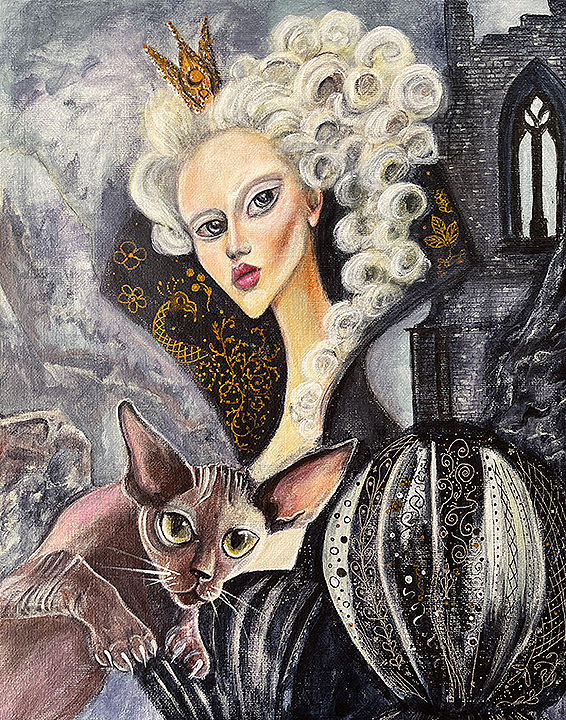Synchronicity: When the Universe is Winking at You
- Natalia Lakes

- Mar 31
- 3 min read

Ever had one of those moments where you think of someone and—ping—they text you out of the blue? Or you're silently mulling over a big life question, and the next song on the radio offers the perfect answer?
These aren’t just quirks of timing. They’re synchronicities—what Swiss psychiatrist Carl Jung called “meaningful coincidences,” where events align not by cause and effect, but through a shared resonance of meaning. To Jung, it was as if the universe occasionally sends us messages in a language deeper than logic—a kind of cosmic Morse code for the soul.
It’s like the universe winking at you.
Jung noticed that these moments often occur during emotionally charged periods: breakups, new beginnings, inner shifts. Why then? Because the unconscious mind stirs during transformation, and what’s stirring inside begins to echo in the outer world. Signs, symbols, and patterns emerge—not created by the events themselves, but linked through meaning. You dream of a golden beetle, and the next day, a rare scarab knocks at your window. The world mirrors the psyche in a way that defies chance.
Synchronicity invites us to question the idea that everything must be linear, measurable, or explainable. It suggests there’s a hidden order at play—one that speaks in metaphors, emotions, and subtle pulls.
Quantum Paradoxes and the Art of Uncertainty
While Jung was exploring the unconscious, physicists were uncovering a world just as strange. Quantum physics—the science of the unimaginably small—reveals a universe where particles exist in multiple states until observed, where entangled particles communicate instantaneously across vast distances, and where the act of looking changes what is seen.
Einstein famously called it “spooky action at a distance.” Yet today, quantum theory is foundational to how we understand the subatomic world.
What does this have to do with synchronicity?
Both quantum theory and Jung’s ideas suggest that the boundaries we take for granted—between self and other, mind and matter, subject and object—might not be so firm. Meaning and matter may be more intertwined than we realize. And in that liminal space, between knowing and not knowing, something else emerges.
A field of potential. A dance of consciousness and form.
Art as the Bridge
This is where art lives.
The creative process often feels like stepping into that field of potential, tapping into something larger than oneself. Artists frequently describe moments of inspiration as “downloads,” where symbols, images, and ideas arrive whole, unbidden. Paintings that seem to anticipate events. Sculptures that evoke memories not yet lived. Poems that feel like echoes from a collective dream.
Art becomes a space where synchronicity plays out—not only for the creator, but for the viewer. The canvas, the stage, the page—all invite us into a dialogue between the inner and outer world. Surrealism, symbolism, abstract expressionism—these movements understood that art doesn’t just depict life; it reveals what lies beneath it.
To make or experience art is to stand at the edge of the visible and invisible. It is to witness form emerging from the unknown.
When a Painting Finds You
Have you ever paused, unexpectedly moved by a painting that seems to reach beyond the frame and touch something wordless inside you? You may not be able to explain why—but you keep thinking about it. Coming back to it. Feeling its presence tug at you.
That’s not just aesthetic preference. That’s synchronicity.
In the symbolic language of the soul, synchronicity is how your inner world speaks to you through outer events. And in the world of art, it often shows up as a magnetic pull—toward a certain image, texture, or color palette. Toward something that feels familiar in a way you can't quite articulate.
Here’s what it might look like:
A painting you scroll past... but hours later, you find yourself returning to it, as if it called you back.
An image that stirs a feeling you can’t name, but can’t forget.
A piece that doesn’t match your décor—but somehow, it fits perfectly in your emotional landscape.
These are not coincidences. They’re alignments.
When a work of art meets you at that level, it’s not simply about taste or design. It’s about recognition. It’s your deeper self saying, “This means something.” Even if you don’t yet know what.
Curating with Intuition
Choosing art for your space is more than selecting colors and compositions—it’s an act of personal resonance. The pieces that truly belong in your life don’t just match your walls; they reflect your journey. They hold your questions, your transitions, your stories.
Let yourself be guided by the moments of quiet recognition. The goosebumps. The stillness. The feeling of being seen by an inanimate object.
Let your inner wisdom do the curating.
Because the right painting doesn’t just hang on the wall. It enters your life like a synchronicity—unexpected, meaningful, unforgettable.


